July 2006: Surf Trip to the Galapagos Islands
Page 5 - Charles Darwin Research Station
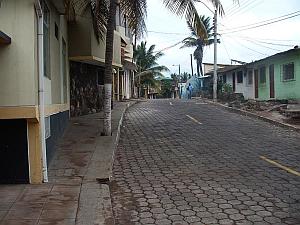 |
| Street scene in front of the Hotel Palmeras |
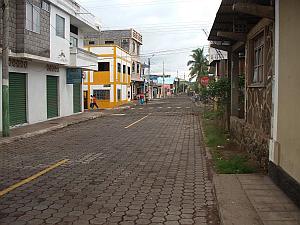 |
Well this is it.
The day we depart.
I’ve a day and a half on Santa Cruz, and yet I feel like I live here.
How the hell does THAT work?
I’m sure it has something to do with basaltic islands in the middle of the ocean.
They have insinuated themselves in to the deepest recesses of my soul somehow, and whenever I encounter a new one, it’s not as if I’m arriving for the first time. Some way, some how, I’m coming home.
So I suppose it seems reasonable that when time comes for me to depart, funny things happen to me.
Upstairs in the Palmeras, breakfast is being served.
Couple of eggs, soft-boiled and chopped up in a stainless steel cup, and toast made out of the delicious local bread that’s produced here, glass of papaya juice and coffee to round it out.
Perfect.
Back down to the room, gather up the shit, and wait out front in the little courtyard by the reception desk.
Soon enough Andres arrives in a small white pickup with a driver.
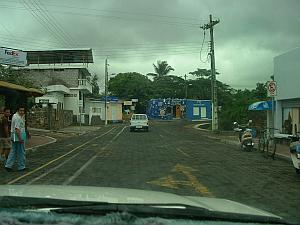 |
| On our way to the Charles Darwin Research Station |
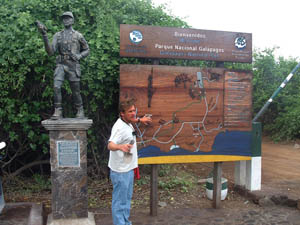 |
| Andres at the Charles Darwin Research Station |
We stow the board bags in the truck bed and hop into the rear seat, and we’re off to the Research Station, where we’re dropped off.
Andres gives us a cook’s tour of the kitchen.
Just as soon as we enter the compound, he lights up with the zeal of his profession and proceeds to explain EVERYthing as he walks us through the grounds.
Marine iguanas, black mangrove, speciation, endemic versus invasive, cactus trees, the peculiar sameness of the color of the local flowers (yellow) and the insect reason this is so, marine and upland microclimate, ocean currents and the things they bring and the things they hold at bay, the age of the islands and the source of their lava and the direction they and the tectonic plate that carries them are traveling in, and on and on and on it goes, in a marvelously stoked and lucid explication that leaves nothing out.
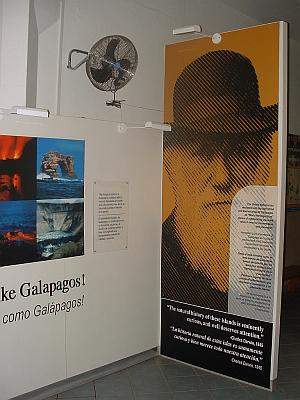 |
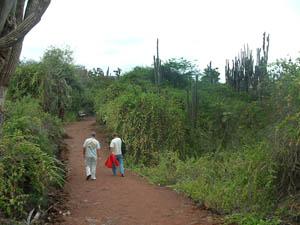 |
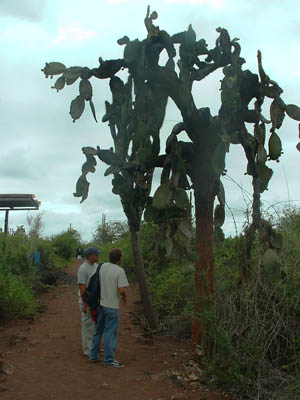 |
The Galapagos Islands are bestowing a final grace upon us, just before we leave, in the form of Andres, fully in his element.
He takes us over to the Giant Tortoise area and shows us hatchlings, bound for repatriation to the islands from which they come, once they are large enough to stand a reasonable chance of surviving in the wild out there.
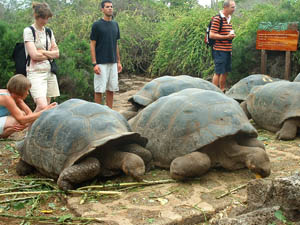 |
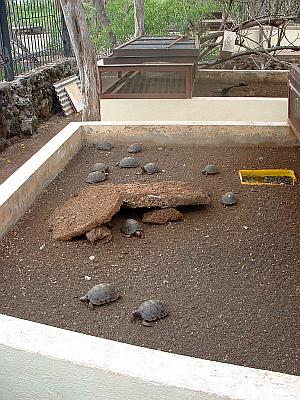 |
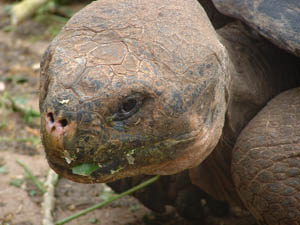 |
We are shown Lonesome George, the last remaining survivor of an island subspecies, and a Giant Tortoise of some repute. I’ve read of this animal repeatedly over the years, and now I’m looking directly upon him.
Amazing.
They’ve given him a female companion, in the hopes that perhaps we can at least hurl half of his DNA forward into the future, but so far no offspring have been born.
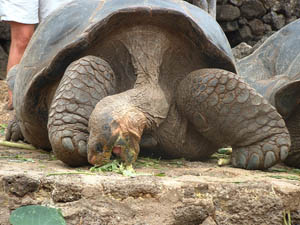 |
| Ancient life chows down |
No one knows quite why.
Male and female tortoises of a wide variety of types and subtypes are shown to our wondering eyes, and described in loving detail.
We come upon a group of BIG turtles, chowing down on some greenery with a circle of humans around them just beyond arm’s length, observing everything they do, and speaking in reverent hushed tones.
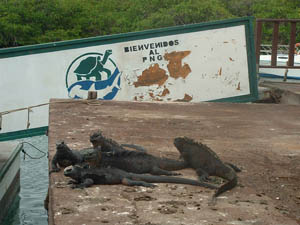 |
| Local lizards lounging on the dock |
These animals are old beyond believing, and one can only imagine the things their small black eyes have taken in over the redounding years.
And then it is time once again, to interrupt something magical, and return to a duller, less alive world, somewhere far away.
And we’re in the truck and headed upland, making the crossing of Santa Cruz, on our way back to Baltra, airplanes, and things I’d rather not have to think about.
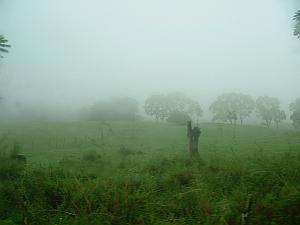 |
| Back into the cloud forest, one last time |
Into the rain.
Through the scalesia forest, one last time.
Down the far slope, on a road that runs straight and true, directly toward Baltra.
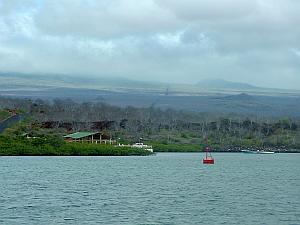 |
| Goodbye Santa Cruz, I will miss you |
Step aboard the ferry, and cross the narrow channel.
On to a bus that takes us on the final bit of our land journey, where we get dropped off at the airport.
Andres remains with us through the entire departure process, right up until we enter the restricted zone.
The goodbyes are fond and hearty.
I will miss this person, and I wish him health, success, and above all else, happiness in everything he may do.
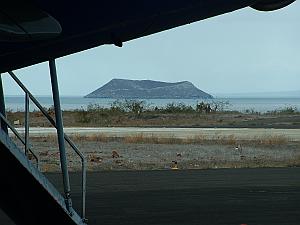 |
| Daphne Major again ..... and goodbye |
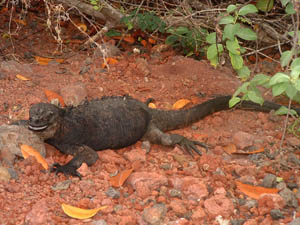 |
| Happy lizard, living large in the Galapagos Islands |
Call for the plane, walk across the tarmac snapping a last frame or two, and it’s over.
Accelerate down the runway and lose contact with this amazing ground.
I stare out the window, not wanting to lose site of this place until I’m forced to.
Santa Cruz disappears, but San Christobal appears off the right wing shortly.
We fly past it and I stare and stare until it too, is no more.
Previous Page |
Return to 16streets.comMaybe try to email me? |